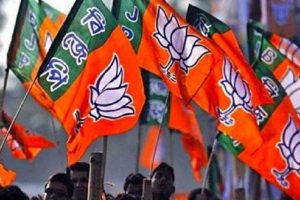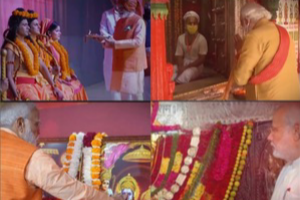While the use of hard power and tough diplomatic negotiations almost invariably hog the spotlight in international relations, soft power rarely comes into play. But this was not the case when top leaders of India and South East Asian countries celebrated a quarter century of becoming dialogue partners in a grand manner in New Delhi on January 25-26.
Even as the media focus was largely on the intense bonhomie seen during the celebrations between Prime Minister Narendra Modi and heads of states and governments from ten Association of Southeast Asian Nations (Asean) in an unprecedented summit-level outreach to each other, a much less noticed but important event was the holding of the five-day Ramayana Festival, organised by the Indian Council for Cultural Relations.
Culture, including Buddhism and Hinduism, has become one of the three key markers in India’s close engagement with South East Asia, the other two being commerce and maritime connectivity. In fact, trade, connectivity and culture travelled from India to South East Asia almost inseparably and at the same time over the centuries, and the epic Ramayana has evolved as a powerful symbol of a strong cultural connect between India and South East Asia. So it was befitting that the ICCR organised the Ramayana Festival coinciding with the India-Asean summit to further India’s diplomacy and energise its ancient links in a contemporary setting through the Ramayana, which has emerged as a soft power tool.
The Ramayana Festival featuring artistes from Singapore, Thailand, Malaysia, Myanmar, Indonesia, the Philippines, Cambodia, Brunei, Vietnam, and Laos began in Delhi and travelled to other parts of India before concluding in Ayodhya, the birthplace of Rama. Modi described the Festival as celebrating India’s deep civilisational and historical relations with Asean. The Indian prime minister was highly impressed by a performance based on the epic during the East Asian Summit held in Manila in November last year.
The Ramayana – or to be precise, various interpretations and depictions of the Ramayana in South East Asian countries – has become a potent symbol of India’s shared cultural heritage and integration with Asean. It is a classic example of how the assimilation of India’s mythology and folklore has become an integral component of South East Asia’s culture.
The various forms of Ramayana prevalent in the South East Asian region, be it Ramakien in Thailand, Ramakerti in Cambodia, Phra Lak Phra Ram in Laos, Yama Zatdaw in Myanmar, Kakawin Ramayana in Indonesia, or Hikayat Seri Rama in Malaysia, bear testimony to the historical bond. The similarities of ‘Mudra’ (hand gestures) in India’s dance forms across Asean and India were also showcased during this Ramayana Festival.
The Ramayana has been a very popular tale in South East Asia but as the epic travelled to that region, it underwent nuanced twists and interpretations by the locals and assimilated with the local folklores and characters. Versions different from the main narrative of the Ramayana Indians have come to know, and varied portrayals of the chief characters in the Indian versions of the epic, are available in Singapore and other South East Asian countries. The first part of Kakawin Ramayana in Indonesia is true to Valmiki’s epic in India. Some experts opine that the emphasis in some versions of the Ramayana in South East Asia is more on story-telling than on evoking devotion.
One finds scenes from the epic in the temples of Prambanan in Yogyakarta in Indonesia, on the murals of the temple of the emerald Buddha in Bangkok, and on the remnants of the 12th-century Angkor Vat temple in Cambodia. Murals based on the epic are also found on the walls of the royal palace in Cambodian capital Phnom Penh. The capital of Thailand was known in the 15th century as Ayutthaya, a derivative of Ayodhya, and the 18th-century King of Thailand, though a Buddhist by religion, took pride in proclaiming his royalist credentials by calling himself Rama I and made Ramakien, the local depiction of the Ramayana, the national epic.
In Myanmar, the 11th-century King Kyanzittha of Pagan dynasty backed up his credentials to the throne by declaring that he was related to the Rama of Ayodhya. The existence of diverse versions of the Ramayana in South East Asia notwithstanding, it can never obliterate the fact that the epic has formed a lasting bond between India and Asean whose enduring appeal has survived the ravages of time.
The Daily Star/ANN











